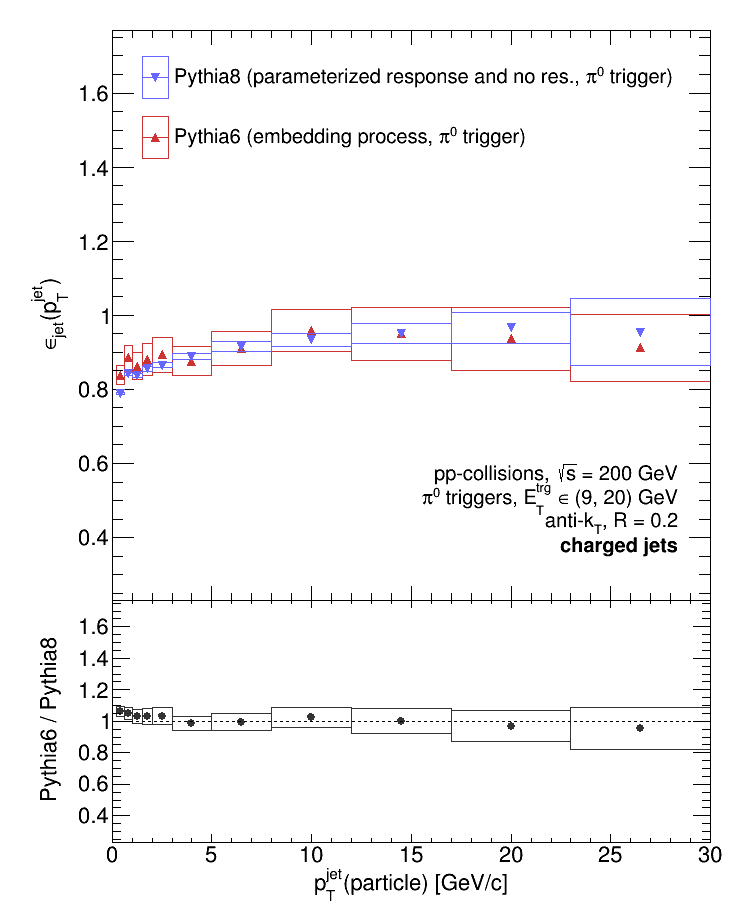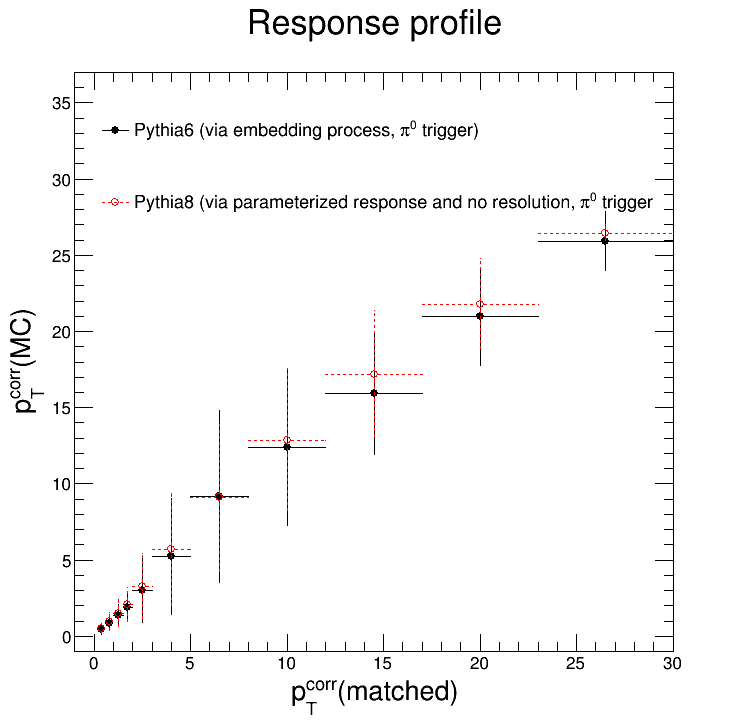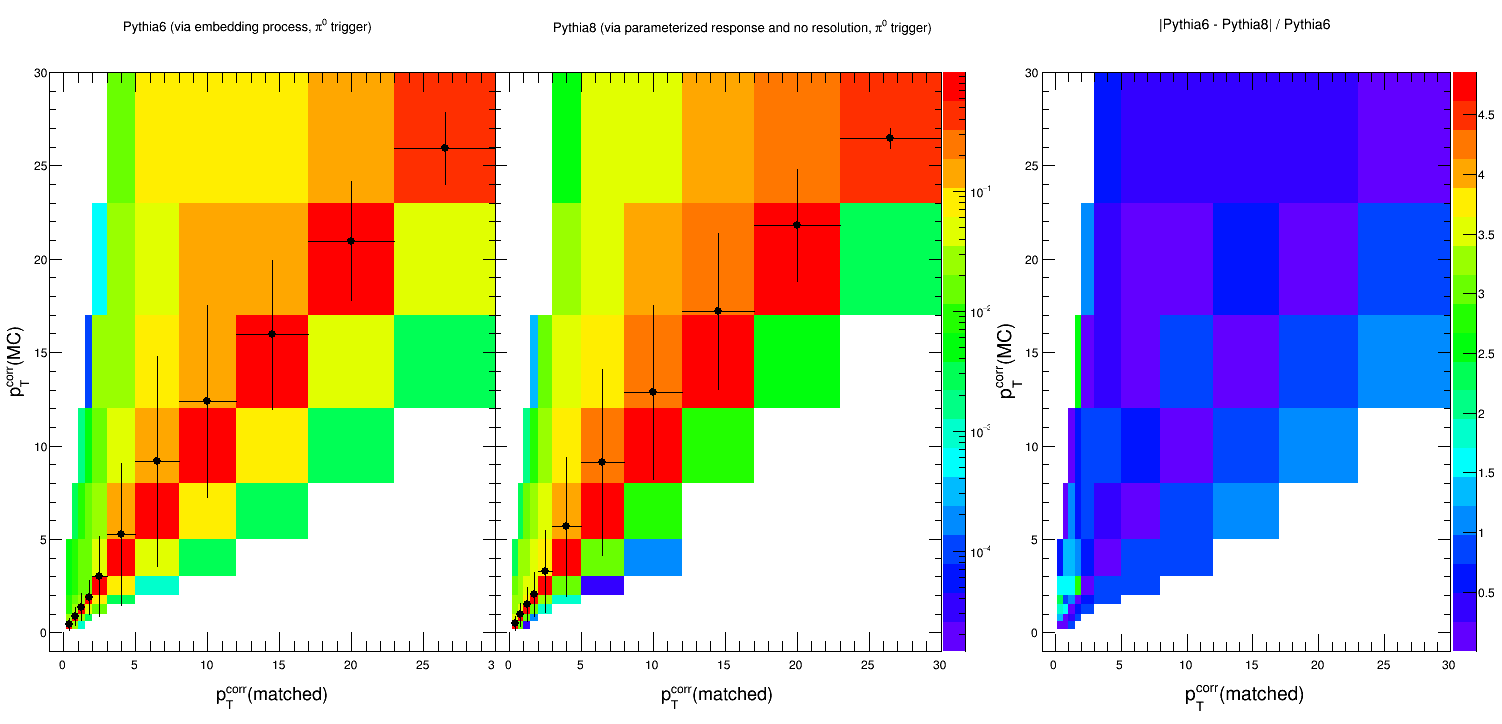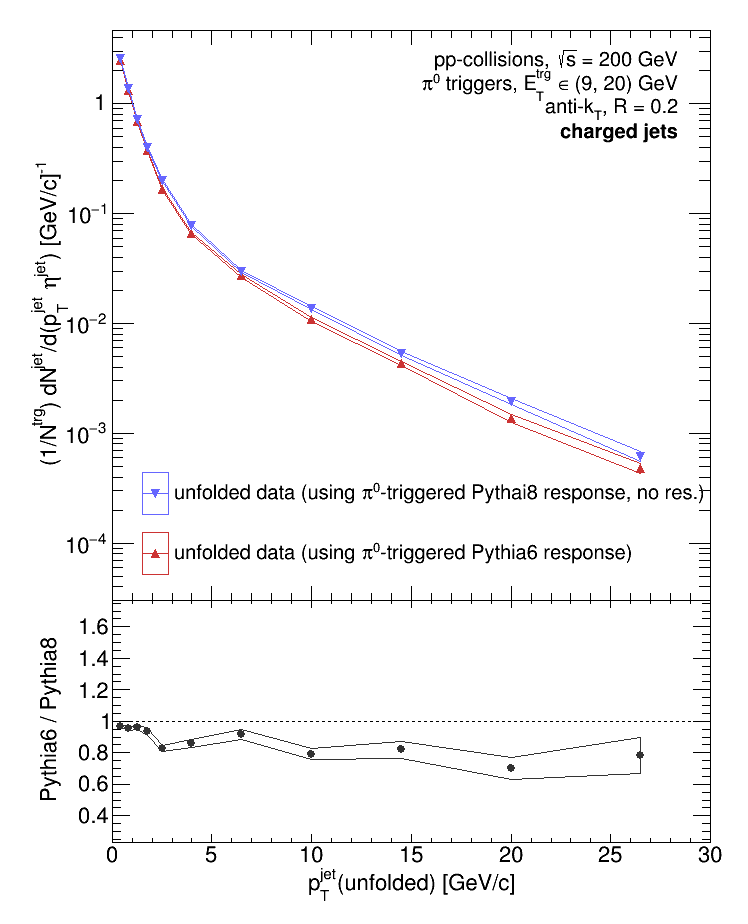Update 07.24.2019 -- Run 9 pp: Comparing Responses and Effects Thereof Between an Unsmeared Pythia8 and a Pi0-Triggered Pythia6
Yesterday, I speculated that maybe the difference between the pi0-triggered Pythia8 corrections and the pi0-triggered Pythia6 corrections might be a question of tracking resolution. More specifically, that I'm overestimating the resolution in the Pythia8 case which makes the corrected data harder. Details can be found here:
To assess this, I turned off the pT smearing in our Pythia8 simulation, calculated a new response matrix and jet-matching efficiency using the "unsmeared" Pythia8 simulation, and then used this new response to unfold our pi0-triggered data. The three plots below compare this new unsmeared Pythia8 response to the pi0-triggered Pythia6 response.



And this plot compares the data unfolded with the unsmeared Pythia8 response to the data unfolded with the pi0-triggered response.

The agreement between the two distributions is at roughly the same level as when I used the "smeared" Pythia8 response and the hadron-triggered Pythia6 response. However, the agreement at the data point is definitely improved, but this is probably due to using the pi0-triggered Pythia6 response rather than using the unsmeared Pythia8 response. The original comparison (between the smeared Pythia8 response and the hadron-triggered Pythia6 response) can be found here:
This rules out the effects of smearing. So the next step is to take an especially critical eye towards the jet-matching algorithm...
- dmawxc's blog
- Login or register to post comments
